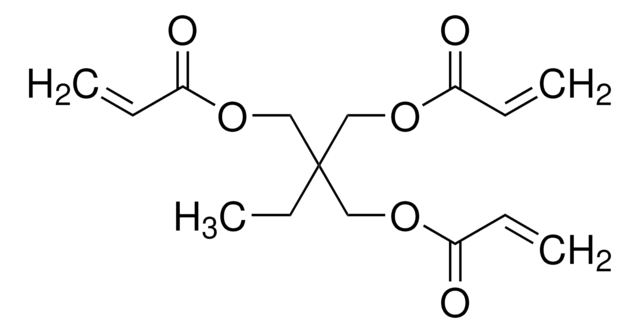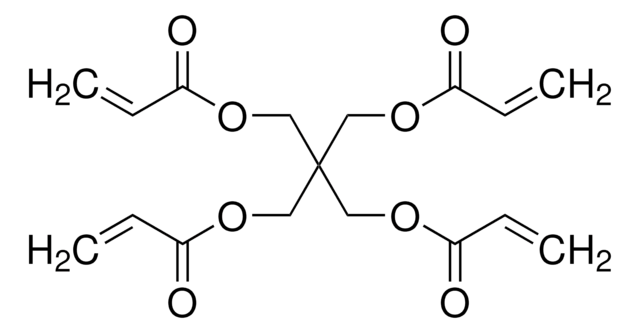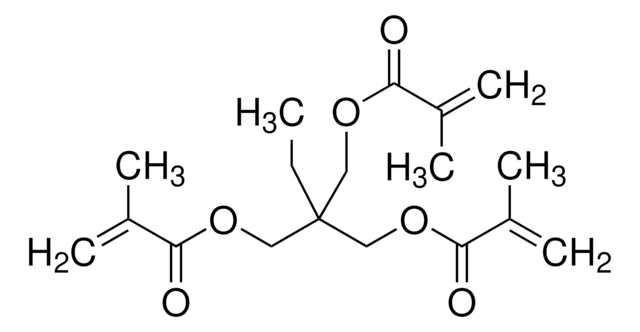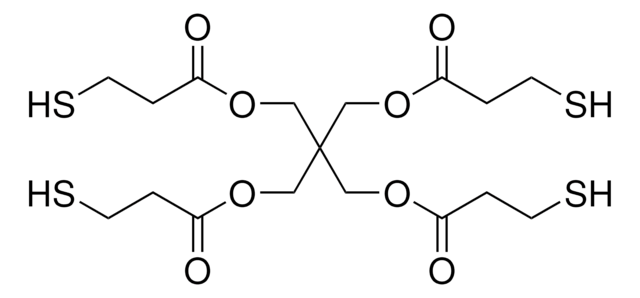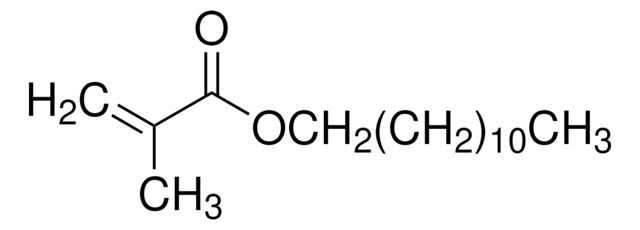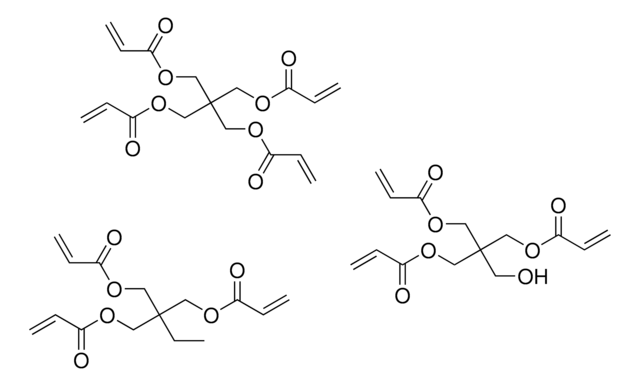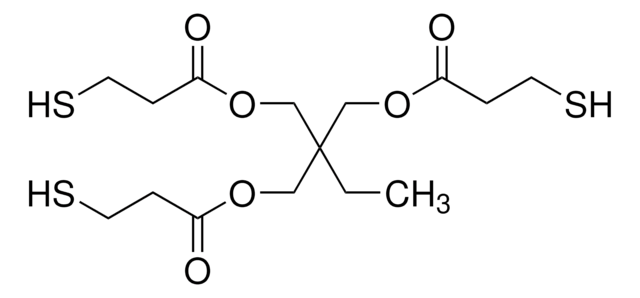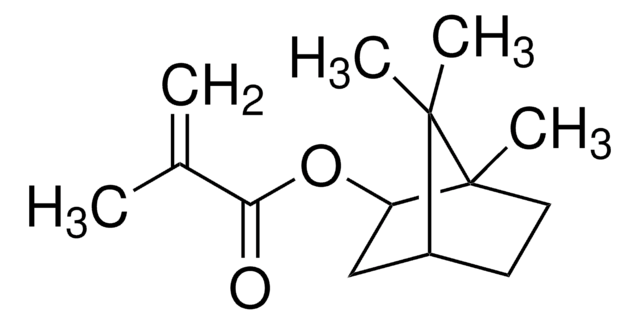246840
Trimethylolpropane trimethacrylate
contains 250 ppm monomethyl ether hydroquinone as inhibitor, technical grade
Sinônimo(s):
Acryester TMP, Blemmer PTT, PTMA, TMPTMA
About This Item
Produtos recomendados
grau
technical grade
Nível de qualidade
densidade de vapor
>1 (vs air)
pressão de vapor
<0.01 mmHg ( 20 °C)
contém
250 ppm monomethyl ether hydroquinone as inhibitor
índice de refração
n20/D 1.472 (lit.)
densidade
1.06 g/mL at 25 °C (lit.)
cadeia de caracteres SMILES
CCC(COC(=O)C(C)=C)(COC(=O)C(C)=C)COC(=O)C(C)=C
InChI
1S/C18H26O6/c1-8-18(9-22-15(19)12(2)3,10-23-16(20)13(4)5)11-24-17(21)14(6)7/h2,4,6,8-11H2,1,3,5,7H3
chave InChI
OKKRPWIIYQTPQF-UHFFFAOYSA-N
Procurando produtos similares? Visita Guia de comparação de produtos
Categorias relacionadas
Descrição geral
Aplicação
- Poly(hydroxyethyl methacrylate) (pHEMA) nanocomposites that are used in the dental industry.
- Silicone rubber with a reduced bleed-out ratio.
- Organic monolithic column by living/controlled free-radical polymerization. This column can be used as a stationary phase in capillary liquid chromatography.
- Macroporous poly (glycidyl methacrylate-co-trimethylolpropane trimethacrylate) materials with fine controlled porous properties.
Código de classe de armazenamento
10 - Combustible liquids
Classe de risco de água (WGK)
WGK 2
Escolha uma das versões mais recentes:
Já possui este produto?
Encontre a documentação dos produtos que você adquiriu recentemente na biblioteca de documentos.
Os clientes também visualizaram
Global Trade Item Number
| SKU | GTIN |
|---|---|
| 246840-10KG | |
| 246840-25KG | |
| 246840-100G | 4061825882475 |
| 246840-500G | 4061825882482 |
| 246840-5G |
Nossa equipe de cientistas tem experiência em todas as áreas de pesquisa, incluindo Life Sciences, ciência de materiais, síntese química, cromatografia, química analítica e muitas outras.
Entre em contato com a assistência técnica